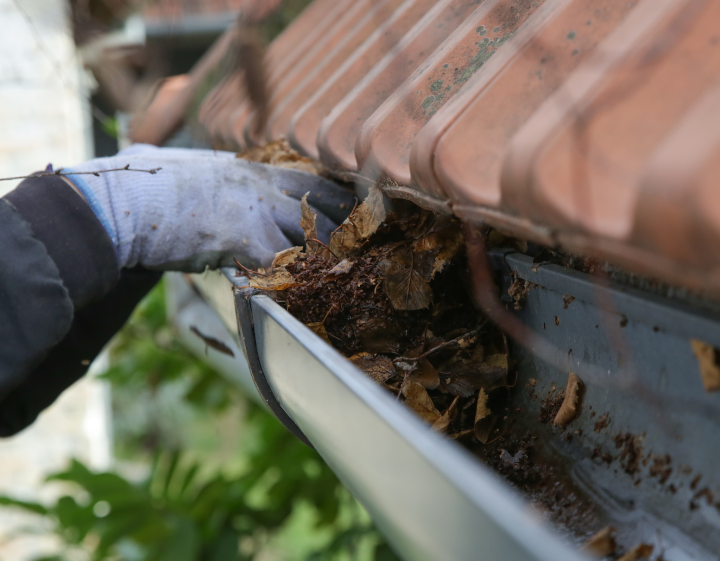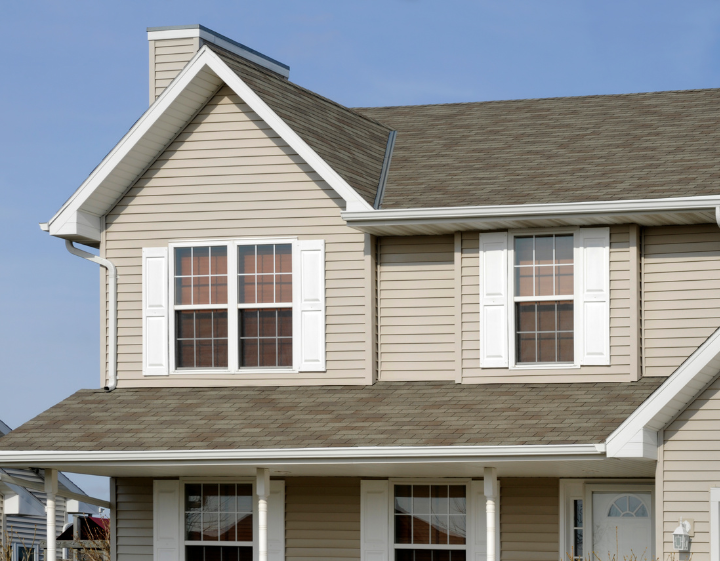Introduction
Did you know that neglecting your gutters can lead to thousands of dollars in home maintenance costs? Gutters play a crucial role in protecting your home from water damage, and regular maintenance is essential to ensure their proper functioning. In this post, we will explore the top 5 signs that indicate your gutters need immediate attention, allowing you to take the necessary steps to prevent costly damage.
Gutters are designed to collect rainwater and redirect it away from your home’s foundation, preventing water from seeping into the basement, causing flooding, or damaging the structural integrity of your property. However, when gutters are neglected, they can become clogged with debris such as leaves, twigs, and dirt, obstructing the flow of water and leading to various issues. By recognizing the early warning signs of gutter problems, you can intervene before significant damage occurs. This article will outline the key indicators that suggest your gutters need immediate attention, enabling you to take proactive measures to protect your home and avoid expensive repairs.
So, let’s dive in and take a look at the top 5 signs that should prompt you to pay closer attention to your gutters. By being aware of these indicators, you can ensure your gutters are functioning optimally and safeguard the longevity and integrity of your home.

1: Overflowing Gutters
Overflowing gutters are a common issue faced by homeowners. The main cause of gutter overflow is blockages from leaves, debris, and even bird nests. As rainwater flows down the roof, it is meant to be collected by the gutters and channeled away from the house. However, when the gutters are clogged, the water cannot flow freely, resulting in overflowing gutters.
Overflowing gutters can lead to various problems for homeowners. Firstly, the excess rainwater cascading from the gutters can cause damage to the siding of the house. Continuous water exposure can result in rotting, peeling paint, and even structural damage. Secondly, the overflow can saturate the soil around the foundation, leading to potential foundation issues, such as cracks and settling. Furthermore, the water spilling over can cause damage to the landscaping, eroding soil and potentially damaging plants.
If you notice overflowing gutters, it is crucial to take immediate action to prevent further damage. The first step is to inspect the gutters for any visible blockages. Remove any leaves, debris, or nests that may be obstructing the flow of water. This can be done using gloves, a ladder, and a gutter scoop. After cleaning, flush the gutters with water to ensure there are no hidden blockages. Regular maintenance is key to preventing gutter overflow in the future. Consider installing gutter guards or screens to prevent leaves and debris from entering the gutters. Additionally, schedule periodic inspections and cleanings to keep the gutters clear and flowing properly. By addressing overflowing gutters promptly and taking preventive measures, homeowners can avoid potential damage to their siding, foundation, and landscaping.
2: Sagging or Detached Gutters
Sagging or detached gutters is a common issue that homeowners may encounter. There are several reasons why gutters may sag or pull away from the house. One of the main causes is the excess weight from debris that accumulates in the gutters over time. As leaves, branches, and other debris build up in the gutters, it can become too heavy for the gutter system to handle, causing it to sag or pull away from the house.
Improper installation is another reason why gutters may sag or detach. If the gutters were not installed correctly, they may not be able to handle the weight of the water or debris, leading to sagging or detachment from the house. This includes issues such as inadequate fastening or improper slope, which can compromise the effectiveness of the gutter system. Sagging or detached gutters should not be ignored as they can lead to serious consequences. The main concern is water damage. When gutters are not functioning properly, water can overflow and pool around the foundation of the house. This excess water can seep into the basement or crawl space, causing flooding and damage to the structure. Additionally, water can infiltrate the walls, leading to mold and mildew growth, which can negatively impact air quality and pose health risks.
If your gutters are sagging or detached, it is crucial to take immediate action to prevent further damage. The best course of action is to call a professional gutter repair or installation service to assess the situation. They have the expertise and tools to properly inspect the gutters and determine the cause of the problem. Whether it’s a simple repair or a complete replacement, professionals can ensure that your gutters are functioning optimally and prevent any future water damage or structural issues.
3: Water Stains or Damage on Exterior Walls
Water stains or damage on exterior walls can be a clear indication that there are problems with the gutters. These stains or damage usually appear in the form of discoloration or streaks on the walls, and they are particularly noticeable near the gutter area. When water is not properly channeled away from the home, it can cause serious damage. This can include water seeping into the walls and causing structural issues, as well as mold and mildew growth which can lead to health problems.
If you notice any water stains or damage on your exterior walls, it is important to take immediate action. The first step is to inspect your gutters for any blockages or damage. Leaves, debris, or broken pieces of gutter can cause water to overflow and not properly flow through the downspouts. If you find any issues with your gutters, it is crucial to repair them as soon as possible. This can involve removing any blockages, replacing damaged sections, or even completely replacing the gutters if they are beyond repair. Taking prompt action when you notice water stains or damage on your exterior walls can help prevent further damage to your home and ensure that water is properly channeled away. Regular gutter maintenance is also important to prevent these issues from occurring in the first place.
4: Mold or Mildew Around the Foundation
One common problem that homeowners may encounter is the presence of mold or mildew around the foundation of their property. This unsightly issue is often a result of improper drainage from the gutters. When gutters are clogged or damaged, water can overflow and accumulate near the foundation, creating a moist environment ideal for mold and mildew growth. The presence of mold or mildew around the foundation can lead to several concerns. Firstly, it poses a health risk to the occupants of the house. Mold spores can be inhaled and cause respiratory problems, allergies, or even more severe health issues. Additionally, mold and mildew can also cause structural damage to the foundation over time. When these organisms grow on the foundation, they can break down the materials and compromise its integrity.
If mold or mildew is present around the foundation, immediate action should be taken to address the issue. Firstly, it is crucial to address any gutter issues that may be causing the improper drainage. This may involve cleaning out the gutters to remove any debris or repairing any damage. Additionally, the affected areas should be thoroughly cleaned and treated to prevent further growth. This may involve using specific mold or mildew cleaners or contacting professionals for assistance. By taking these immediate actions, homeowners can prevent the further spread of mold or mildew, protect their health, and safeguard the foundation of their property.
5: Plants Growing in Gutters
Plants growing in gutters can be a common issue that occurs when seeds and debris accumulate over time. As rainwater runs off the roof and into the gutters, it carries along with it various organic materials, such as fallen leaves, branches, and seeds. If these items are not cleared out regularly, they can sprout and take root in the gutters, leading to the growth of plants.
The presence of plants in gutters is a clear indication of severe neglect and lack of maintenance. It signifies that the gutters have not been properly cleaned and cleared for an extended period. When plants start to grow, they can quickly multiply and spread, creating significant blockages within the gutters. This obstructs the flow of rainwater, causing it to overflow or back up onto the roof. The excessive weight of the accumulated debris and plant growth can also put additional strain on the gutter system, potentially causing it to sag or break.
If you notice plants growing in your gutters, it is crucial to take immediate action. Start by thoroughly cleaning the gutters, removing all the plants, debris, and silt that has accumulated. This can be done using a small garden trowel or a handheld scoop. Once cleaned, consider installing gutter guards to prevent future occurrences of plant growth. Gutter guards act as a barrier, preventing seeds and debris from entering the gutter system while allowing water to flow freely. Regular gutter maintenance, including periodic cleaning and inspections, should be emphasized to avoid the reoccurrence of plants growing in the gutters.

Additional Warning Signs and Preventative Tips
In addition to overflowing gutters, there are several other warning signs that indicate your gutters need attention. One common sign is the presence of rust on your gutters. Rust can weaken the structural integrity of the gutters and lead to leaks or even collapse. Cracks in the gutters are also an indication that they need immediate attention. These cracks can allow water to escape and cause damage to your home’s foundation or landscaping. Another sign to watch for is pooling water near the foundation. This can occur when the gutters are not effectively channeling water away from your home, which can lead to water damage and foundation problems over time. It’s important to address these warning signs promptly to prevent any further damage to your home.
Preventative Maintenance Tips:
1. Regularly clean your gutters and downspouts to remove debris such as leaves, twigs, and dirt that can cause blockages.
2. Inspect your gutters at least twice a year, ideally in the spring and fall, to identify any signs of damage or wear.
3. Trim overhanging branches near your roof to prevent them from causing damage to your gutters during strong winds or storms.
4. Consider installing gutter guards to prevent debris from entering and clogging the gutters.
5. Ensure that the gutters are securely fastened to the fascia board and that there are no loose or sagging sections.
By following these preventative maintenance tips and staying alert to additional warning signs, you can help prolong the lifespan of your gutters and avoid costly repairs or replacements.
Conclusion
Recognizing the signs that your gutters need attention is crucial for the protection and maintenance of your home. By addressing these signs promptly, you can prevent costly damage to your property and ensure that your gutters are functioning effectively. To take the necessary steps to address these signs, it is highly recommended to schedule a professional gutter inspection and maintenance service. These experts have the knowledge and tools to identify any issues and provide the appropriate solutions. Regular gutter maintenance is essential for the overall well-being of your home. By keeping your gutters clean and well-maintained, you can avoid issues such as water damage, foundation problems, and mold growth.
In summary, the top 5 signs that your gutters need immediate attention include overflowing water, sagging or detached gutters, pests or plants in the gutters, water damage on the exterior or interior of your home, and erosion or pooling near the foundation. Paying attention to these signs can save you a significant amount of money and ensure your home remains safe and protected.
Don’t delay taking action! Ensure your gutters are in good working condition and prevent costly damage to your home by scheduling a professional inspection and maintenance service today. Your home deserves the best care, and your proactive steps will go a long way in preserving its value and integrity.
